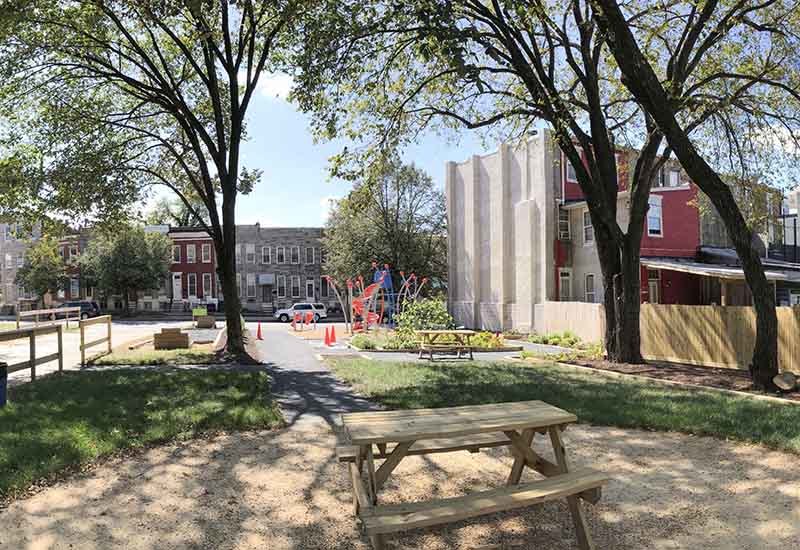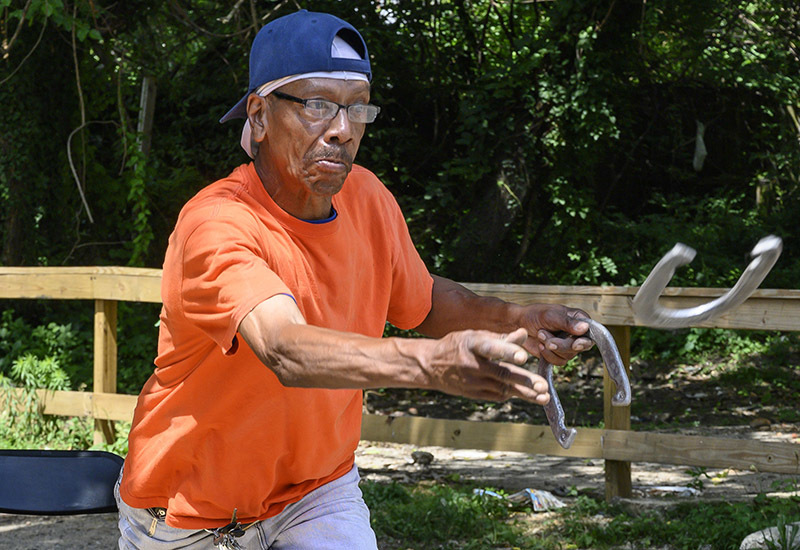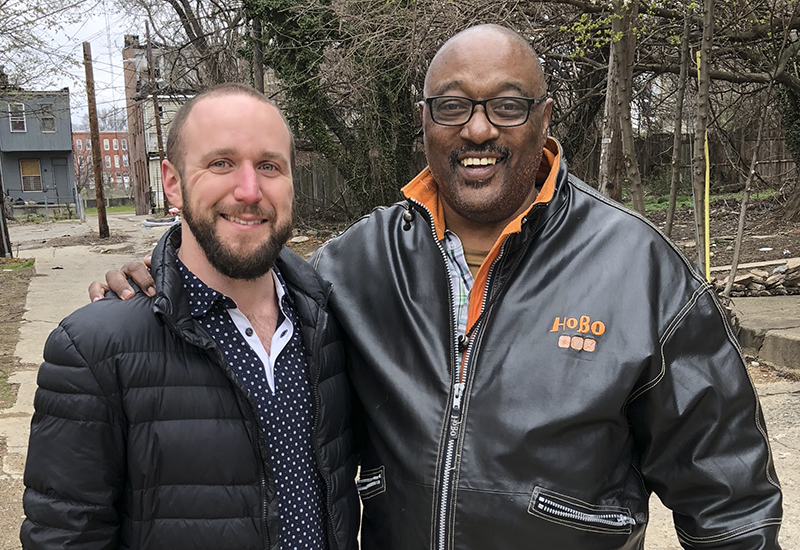
The long vacant site that now hosts Kirby Lane Park in West Baltimore’s Franklin Square used to be filled with trash, discarded toilet seats, old kitchen cabinets, and truckloads of discarded drywall and debris from nearby vacant homes. Block captain Donald Quarles, who has lived in the area for 45 years, knew merely trying to police the illegal dumping wasn’t going to be enough to clean up what had become a community eyesore. Working with Daniel Greenspan, community design coordinator at Bon Secours Health System, the two found a solution—a fenced-in park that has become both a green space and an oasis.
“We wanted to find something that would keep people engaged versus just wishing for the dumping to end,” Greenspan says of the park. “We knew that would stop it. It shows that someone is thinking of the space.”
In the four months that Kirby Lane Park has been open, there has not been a single act of vandalism or piece of excess trash, Quarles says.
Located on West Saratoga Street between Fulton and Monroe streets—a few blocks south of Route 40, aka the Highway to Nowhere, Kirby Lane Park is compact. Greenspan worked on the economics of the space to fit in as much as possible. He and Quarles met in 2017 through Quarles’ pastor—who had gotten to know Greenspan through community action meetings—and immediately knew that he would be a perfect fit for the project. Last summer, the two got to work devising what they wanted the park to be.
They started by leaning on tradition and installing a horseshoe pit—something that had previously been a pastime for those who lived on the block. Greenspan says that this familiar, easy-to-play outdoor sport was the spark that got residents to come out in droves even before the park had been completely fleshed out. With funding from Parks and People Foundation and The Southwest Partnership, grants from organizations like Keep Baltimore Beautiful, and playground equipment donated from Play For All in collaboration with Cunningham Recreation, the park as it stands now was completed in late August.
“Kirby Lane Park is a healing park,” Quarles says. “We wanted it to be a place for kids to play and adults to come to find healing for their hurts, habits, and hangups.

That healing, they hope, will come in many different forms. At the center of the park is what Quarles calls Serenity Garden, a long plot with a variety of plants and herbs. Alongside the park’s edges, tulips and lilies will soon sprout up. And, with the help of a GoFundMe page, they help to raise money for a mural that will tie the whole thing together.
With the success of the park last summer and overall community engagement, there are also now plans for a stage, as well as crab feasts, church services, and community performances.
Having the park is important and preserving it will be equally as important. It’s encouraging that no liable damage has been done so far, but that hasn’t happened by accident. In the same way that neighbors have responded to the park’s installation by patronizing it, so too have they taken to cleaning it when they walk by and ensuring everything is in good shape.
Quarles inspects it constantly—he feels it’s his responsibility. “If I didn’t care about this I wouldn’t get involved and do the things I do for upkeep,” he says, “including raking and picking up leaves.”
He and Greenspan have plans for further expansion. With the houses adjacent to the park set to be knocked down, a running track, pull-up bars, and a small football field are under consideration for potential installation in their place. It’s the type of positive change that Quarles hopes can bring his neighborhood back to its former glory, when there were Laundromats and five-and-dimes dotting the block as well as kids and families playing outside.
“This neighborhood hasn’t had anything like this,” Quarles says. “It’s exciting to see that things can change to the way they used to be. I’ve seen the good come with the bad. This is a start to rebuild this area.”
